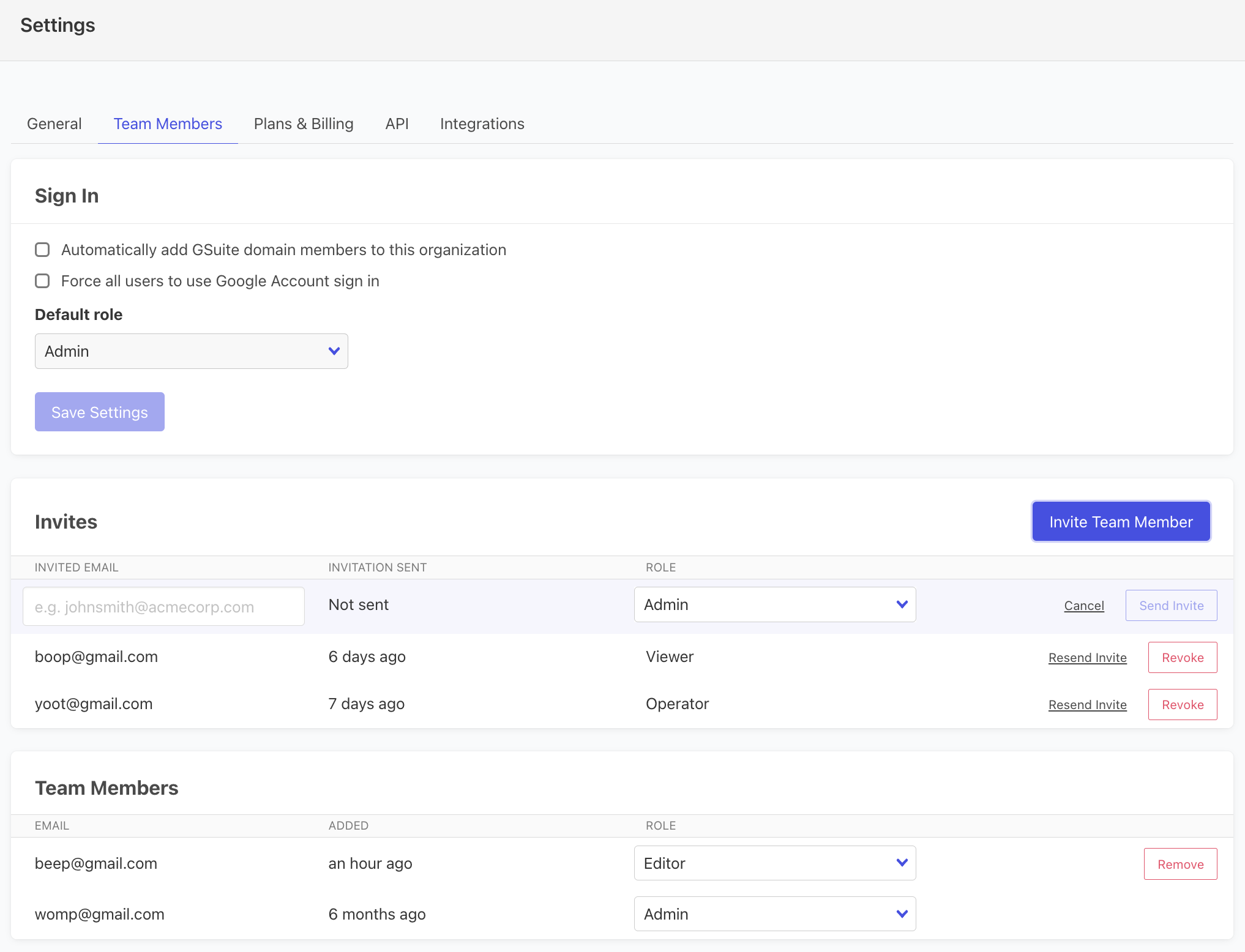Census makes it easy to sync data to business tools - almost too easy.
Your data warehouse contains sensitive data about your customers and your entire business. Although we have built-in tools to help ensure data quality, data teams are rightfully cautious about extending the power of reverse ETL to too many people.
Today, we’re excited to announce that role-based access controls (sometimes known as RBAC) are now available in Census!
Now, data teams can feel more confident about opening up warehouse data to more experimentation. You can empower end users to self-serve with Census, without worrying that they’ll sync the wrong data, break data models, or change business logic.
Census admins can easily assign user roles to secure access to sensitive data and empower better collaboration between data & ops.
Help your business users run wild!
⚙️ The right roles for Reverse ETL
In addition to new role-based access controls, Census is introducing the Operator role. This is a unique, restricted permission designed around how many businesses structure their teams. Operators can create new Segments and Syncs in Census, but only on data models that have been pre-approved for consumption by Editors and Admins. This allows your organization to tier permissions and still give end users flexibility to define syncs on the right data.
🙌 What’s included in access controls?
Access controls provide four levels of access, which can be controlled when adding new users to your Census organization.

ℹ Role-based access controls are only available for Platform plans.
For more information, read the product docs.
💆 How do access controls make my life easier?
By allocating roles based on least privilege so users can only access data necessary for their job requirements, Census admins and IT departments can more effectively manage how data is accessed and used, and by who.
Access controls give you finer control over the way a user interacts with data, helping you achieve:
✅ Security: Protect critical data by restricting access to sensitive information, thus reducing the potential for data breaches or data leakage.
✅ Compliance: Improve compliance with regulatory and statutory requirements for confidentiality and privacy, especially for personally identifiable information (PII).
✅ Operational efficiency: Simplify permission management for large teams and integrate third-party agencies or vendors by giving them predefined roles, instead of assigning one-off permissions for each user.
✅ Reduced costs: Conserve or more cost-effectively use resources, such as network bandwidth, memory and storage.
🔮 What’s next?
This release is just the next step for Census in data controls and governance — there are plenty of improvements on the way!
Next on the list is Workspaces, which will help customers further refine data access for different use cases. Users can be members of one or more workspaces, with different roles in each. For example, admins can set up separate Sales and Marketing workspaces where different team members have access to different sets of connections and/or data. Stay tuned!
👉 Get a demo of Census or try for free today!

















